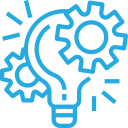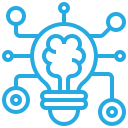Speaking & Training
Please feel free to get in contact with Ken if you have any questions or inquiries about the work below.
Educational Technology
Diversity, Equity, and Inclusion
Multimedia/Literacy
Cultural Relevance/Responsive
Visual Storytelling
Design
Leadership
Categories
AI in Education: A Leadership Guide for Policy, Implementation, and Best Practices

Techquity™: Creating Learning Environments For Sustainability, Equity, and Access
This interactive keynote will address how to navigate one of the biggest challenges educators face today—providing students with equitable and culturally inclusive learning opportunities. This talk will include a detailed analysis of the varying levels of culture, addressing our social-emotional needs and why we must ensure our students are provided a diverse and equitable educational experience.
Further expanding on the primary purpose will be a look at how technology serves as both a needed and critical component to that end. Embedded within the keynote are personal narratives aligned with the central theme of incorporating both a culturally relevant and culturally responsive pedagogy into any content area.

A New Approach to Literacy: Information, Media, and Technology
We have an unprecedented level of accessibility to information. This information can be research, news, stories, and data. In many cases, our access to that information can, and often does, occur across various technological devices, including a computer, a tablet, and a smartphone.
Given the mass quantities of information available, it is vital for us to develop strategies for curating, analyzing, critiquing, and using this information. Part of this is discerning what is useful versus what is not. What is reliable versus what is not?
This keynote will focus on identifying appropriate strategies and methodologies for developing literacy around information, media, and technology. The keynote also examines why these skill sets are critical for our students and ourselves.

Computational Thinking and Learner Empowerment: Connecting Learning to Context
One of the most powerful things we can do in an educational environment is a catalyst for developing, supporting, and promoting critical and analytical thinking. Whether it be Computer Science, STEM, or Engineering, a highly effective way to promote critical and analytical thinking is through computational thinking.
This is a higher-level cognitive and design process whereby students can analyze problems and form sustainable, sometimes highly creative, solutions. This is also one of the core foundations of true learner empowerment. Computational thinking, when combined within a Computer Science environment, also takes into account a higher-order use of technology while overlapping it with key strategies to solve any given challenge.
By teaching learners to solve problems using the same components as a computer, we prepare them for a deeper knowledge base that combines creativity with computational thinking for ultimate innovation and success.

Transformational Teaching and Learning with Technology
In our quest to provide students with rich learning environments, we often strive to find creative ways to further engage our students. In some cases, this may involve the use of technology to a variety of degrees. Since technology has a ubiquitous influence on the everyday lives of our students, one of our biggest challenges is identifying ways to leverage it for increased student learning.
This keynote will examine a variety of methodologies and strategies for effectively implementing and integrating technology into the curriculum. We will also look at ways in which we can leverage the use of technology to increase student engagement as well as foster environments for equity.
Bridging The Binary: Examining and Addressing the Digital Divide in the era of Artificial Intelligence
This highly interactive and through provoking keynote delves into the burgeoning issue of the digital divide in the era of pervasive artificial intelligence, taking a critical look at how this divide not only deepens existing societal inequities but also constructs new ones.
We’ll examine the intersection of AI and digital accessibility, exploring the potential of artificial intelligence as an innovative and transformative solution to persistent challenges in achieving digital equity. With an increasing reliance on technology for education, we’ll highlight the urgent need for inclusive and relevant learning environments. We’ll consider the role of AI in shaping these environments, from personalized learning to assistive technologies.
This keynote will call for concerted efforts to ensure that no student is left behind in the digital age, championing the importance of equal access, engagement, and achievement in technology-integrated classrooms Through a thorough exploration of these themes, we will initiate a discourse on the role of AI in bridging the digital divide and fostering an equitable educational landscape. Lastly we will focus on a belief in the promise of artificial intelligence to democratize education and the potential it holds to revolutionize learning for all students.
Revolutionizing Education: Unleashing the Unprecedented Power and Potential of Artificial Intelligence Technology in Education
Step into the transformative landscape of Artificial Intelligence and witness its profound influence on education. This keynote will delve into the crucial topics of AI’s ever growing role in our societal norms and its impact on education.
The keynote examines how AI can be an automated mechanism in perpetuating or mitigating bias, and the contemporary essential relevance of digital fluency skills. We’ll delve into the heart of AI’s impact on writing and research, creative expression, design, and information literacy, while also emphasizing its potential in fostering many meaningful and relevant use cases. This keynote will further explore not only how AI revolutionizes time efficiency and student engagement, but also how it shapes our understanding of bias in technology and the importance of digital fluency in today’s world while preparing for tomorrow.
Navigating Digital Frontiers: Confronting Bias and Power for Equity in Education through AI
Navigating our new digital frontier requires us to examine the critical intersection of AI and education at a juncture of innovation and equity. This talk will explore how AI can either perpetuate disparities or empower transformative learning experiences, emphasizing the need for ethical implementation to ensure technology bridges rather than widens both digital and learning divides. This discussion simultaneously invites and challenges educators, leaders, and policymakers to explore strategies for creating/implementing AI systems that enhance teaching and learning while dismantling barriers to an equitable education. Join me as we look into pioneering solutions that confront AI’s challenges, ensuring a more empowering and equitable educational landscape.
Educational Technology – Workshops
- Techquity™: Merging Educational Technology with Culturally Intelligent Learning Experiences
- Problem-Based Learning and Design Thinking
- Media Literacy: Developing a deeper understand the impact media and technology have in how we think and what we do
- Blended Learning Design: Culturally Responsive, Equitable, Inclusive, and Differentiated
- Blended Learning: Development, Design, and Implementation
- Google Workspace for Teachers
- Google Workspace for Inclusion and Equity
-
The Promises and Perils of Artificial Intelligence in Education: Building a Foundational Understanding
-
Unlocking Creativity: AI-Powered Visual Storytelling and Creativity for Educators
-
Teaching with Smart Machines: An Advanced AI Workshop for Educators
-
Designing An Effective AI Workflow: An Educator’s Guide To Equitable and Strategic Use of AI Applications
- Understanding Bias in AI and the Skills Students Need for their Future
Diversity, Equity, and Inclusion – Keynotes

Techquity™: Creating Learning Environments For Sustainability, Equity, and Access
This interactive keynote will address how to navigate one of the biggest challenges educators face today—providing students with equitable and culturally inclusive learning opportunities. This talk will include a detailed analysis of the varying levels of culture, addressing our social-emotional needs and why we must ensure our students are provided a diverse and equitable educational experience.
Further expanding on the primary purpose will be a look at how technology serves as both a needed and critical component to that end. Embedded within the keynote are personal narratives aligned with the central theme of incorporating both a culturally relevant and culturally responsive pedagogy into any content area.

Design Matters: Rethinking Learning Environments
In today’s age, the terms learning and classroom (learning space) have taken on a myriad of different and newer meanings. Both regularly occur and are associated with physical and digital environments. Oftentimes, the design of these environments can be a determining factor in the desired outcomes. In both cases, the designs of each can influence not only the learner but also the breadth and quality of their learning experience.
It is this experience that can mean the difference between successful engagement in learning and disengagement. During this keynote, we will examine ways in which we can leverage the designs of physical and digital space to create a unique learner experience, as well as strategies for the effective design of learning environments. Because Design Matters.

Building Sustainable Pathways Towards An Inclusive and Mindful Culture
Among the many factors that play a role in our experiences, being seen, being heard, and being included are critical to those. School is no different as these are aligned with some of our basic needs, yet how often do we look at our own habits of mind and cultural norms to ensure that we are mindful of our actions/interactions and ensure we are truly being inclusive and mindful?
In this interactive session, we will take a macro perspective on school culture and develop strategies for consistent examination of our habits of mind and cultural norms. We will look at the norms that can lead to a lack of inclusion and how we can make mindfulness a norm instead.
Participants will be taken through design and problem-based protocols that will serve as the basis for sustainable, restorative practices as well as be the catalyst for developing a sustainably inclusive culture.

Mirrors, Windows, and Sliding Glass Doors: How We See Ourselves, How We See Others, and Why Learning Culture Matters Most
When it comes to learning and our learning environments, culture is one of the most critical factors in our experiences. The culture you create, the culture you perpetuate, and the culture you participate in can often be the determining factor for many things, including student success, student access, and overall student experience.
Culture is also a key determinant of the experiences of the educators in the building or district. In this talk, we will examine how our biases, our environments, and our authenticity can often be one of the most important factors in the experiences we and our students have.
Diversity, Equity, and Inclusion – Workshops
- Techquity™: Merging Educational Technology with Culturally Intelligent Learning Experiences
- Designing A Culturally Relevant and Culturally Responsive Pedagogy
- Design Thinking: Inclusion, Responsive, Equity, and Differentiation
- Equity and Inclusion: You Are The Binder
- Curriculum, Race, and Culture: Conversations on what we teach and how we learn
- Race, Culture, and Identity: Dismantling our biases that affect student achievement
- Google Workspace for Inclusion and Equity
- Maker Kitchen- Project-Based and Experiential Learning (Learner Edition, Equity Edition, Innovator Edition)
- Building An Effective and Sustainable Cross-Cultural Learning Environment
- Organizational Culture- Examining Habits of Minds and Cultural Norms (this workshop is designed to support organizational change)
-
5 Equitable and Inclusive Edtech Policy Ideas For Learning Diversity
-
5 Ways To Design An Effective Technology-Rich and Inclusive Learning Environment
- Understanding Bias in AI and the Skills Students Need for their Future
Multimedia/Literacy – Keynotes

A New Approach to Literacy: Information, Media, and Technology
We have an unprecedented level of accessibility to information. This information can be research, news, stories, and data. In many cases, our access to that information can, and often does, occur across various technological devices, including a computer, a tablet, and a smartphone.
Given the mass quantities of information available, it is vital for us to develop strategies for curating, analyzing, critiquing, and using this information. Part of this is discerning what is useful versus what is not. What is reliable versus what is not?
This keynote will focus on identifying appropriate strategies and methodologies for developing literacy around information, media, and technology. The keynote also examines why these skill sets are critical for our students and ourselves.

Transformational Teaching and Learning with Technology
In our quest to provide students with rich learning environments, we often strive to find creative ways to further engage our students. In some cases, this may involve the use of technology to a variety of degrees. Since technology has a ubiquitous influence on the everyday lives of our students, one of our biggest challenges is identifying ways to leverage it for increased student learning.
This keynote will examine a variety of methodologies and strategies for effectively implementing and integrating technology into the curriculum. We will also look at ways in which we can leverage the use of technology to increase student engagement as well as foster environments for equity.
Multimedia/Literacy – Workshops
- Media Literacy: Developing a deeper understand the impact media and technology have in how we think and what we do
- Understanding Bias in AI and the Skills Students Need for their Future
Cultural Relevance/Responsive – Keynotes

Techquity™: Creating Learning Environments For Sustainability, Equity, and Access
This interactive keynote will address how to navigate one of the biggest challenges educators face today—providing students with equitable and culturally inclusive learning opportunities. This talk will include a detailed analysis of the varying levels of culture, addressing our social-emotional needs and why we must ensure our students are provided a diverse and equitable educational experience.
Further expanding on the primary purpose will be a look at how technology serves as both a needed and critical component to that end. Embedded within the keynote are personal narratives aligned with the central theme of incorporating both a culturally relevant and culturally responsive pedagogy into any content area.

Building Sustainable Pathways Towards An Inclusive and Mindful Culture
Among the many factors that play a role in our experiences, being seen, being heard, and being included are critical to those. School is no different as these are aligned with some of our basic needs, yet how often do we look at our own habits of mind and cultural norms to ensure that we are mindful of our actions/interactions and ensure we are truly being inclusive and mindful?
In this interactive session, we will take a macro perspective on school culture and develop strategies for consistent examination of our habits of mind and cultural norms. We will look at the norms that can lead to a lack of inclusion and how we can make mindfulness a norm instead.
Participants will be taken through design and problem-based protocols that will serve as the basis for sustainable, restorative practices as well as be the catalyst for developing a sustainably inclusive culture.

Mirrors, Windows, and Sliding Glass Doors: How We See Ourselves, How We See Others, and Why Learning Culture Matters Most
When it comes to learning and our learning environments, culture is one of the most critical factors in our experiences. The culture you create, the culture you perpetuate, and the culture you participate in can often be the determining factor for many things, including student success, student access, and overall student experience.
Culture is also a key determinant of the experiences of the educators in the building or district. In this talk, we will examine how our biases, our environments, and our authenticity can often be one of the most important factors in the experiences we and our students have.
Cultural Relevance/Responsive – Workshops
- Techquity™: Merging Educational Technology with Culturally Intelligent Learning Experiences
- Designing A Culturally Relevant and Culturally Responsive Pedagogy
- Design Thinking: Inclusion, Responsive, Equity, and Differentiation
- Blended Learning Design: Culturally Responsive, Equitable, Inclusive, and Differentiated
- Service Learning- A Real and Responsive Approach that includes Civic Engagement
Visual Storytelling – Workshops
-
Media Literacy: Developing a deeper understand the impact media and technology have in how we think and what we do
-
Effective Communication in a Visual World
-
Making Multimedia Meaningful- Stories That Matter
-
Visual Storytelling, Creativity, and Design
-
Visual Storytelling, Digital Storytelling, and Cinematic Narrative
-
Designing Visual Thinking and Learning- Design
-
Designing Visual Thinking and Learning- Visual Literacy
-
Designing Visual Thinking and Learning- Presentation Design
Design – Keynotes

Design Matters: Rethinking Learning Environments
In today’s age, the terms learning and classroom (learning space) have taken on a myriad of different and newer meanings. Both regularly occur and are associated with physical and digital environments. Oftentimes, the design of these environments can be a determining factor in the desired outcomes. In both cases, the designs of each can influence not only the learner but also the breadth and quality of their learning experience.
It is this experience that can mean the difference between successful engagement in learning and disengagement. During this keynote, we will examine ways in which we can leverage the designs of physical and digital space to create a unique learner experience, as well as strategies for the effective design of learning environments. Because Design Matters.

Mirrors, Windows, and Sliding Glass Doors: How We See Ourselves, How We See Others, and Why Learning Culture Matters Most
When it comes to learning and our learning environments, culture is one of the most critical factors in our experiences. The culture you create, the culture you perpetuate, and the culture you participate in can often be the determining factor for many things, including student success, student access, and overall student experience.
Culture is also a key determinant of the experiences of the educators in the building or district. In this talk, we will examine how our biases, our environments, and our authenticity can often be one of the most important factors in the experiences we and our students have.

Generation NOW: Contemporary Teaching and Learning
We have a startling level of accessibility to information and resources. Today’s learner is not only conditioned for immediate feedback, but in many cases, the desire for immediate results is also expected. Adding to this is the competition for attention, The Attention Economy.
As a result, one of the more significant challenges we face is how to appropriately engage and connect with today’s learners. When it comes to technology and digital resources, many of these forms of engagement can occur at varying lengths of time, from seconds to semesters.
Whether it be teaching, learning, or creating, we have a plethora of resources available, literally at our fingertips. During this interactive keynote, we will explore ways in which these resources can foster increasing degrees of engagement from a teaching, learning, and creating perspective.

Computational Thinking and Learner Empowerment: Connecting Learning to Context
One of the most powerful things we can do in an educational environment is a catalyst for developing, supporting, and promoting critical and analytical thinking. Whether it be Computer Science, STEM, or Engineering, a highly effective way to promote critical and analytical thinking is through computational thinking.
This is a higher-level cognitive and design process whereby students can analyze problems and form sustainable, sometimes highly creative, solutions. This is also one of the core foundations of true learner empowerment. Computational thinking, when combined within a Computer Science environment, also takes into account a higher-order use of technology while overlapping it with key strategies to solve any given challenge.
By teaching learners to solve problems using the same components as a computer, we prepare them for a deeper knowledge base that combines creativity with computational thinking for ultimate innovation and success.
Design – Workshops
- Techquity™: Merging Educational Technology with Culturally Intelligent Learning Experiences
- Designing A Culturally Relevant and Culturally Responsive Pedagogy
- Problem-Based Learning and Design Thinking
- Design Thinking: Inclusion, Responsive, Equity, and Differentiation
- Blended Learning Design: Culturally Responsive, Equitable, Inclusive, and Differentiated
- Blended Learning: Development, Design, and Implementation
- Visual Storytelling, Creativity, and Design
- Designing Visual Thinking and Learning- Design
- Designing Visual Thinking and Learning- Visual Literacy
- Designing Visual Thinking and Learning- Presentation Design
- Maker Kitchen- Project-Based and Experiential Learning (Learner Edition, Equity Edition, Innovator Edition)
- Service Learning- A Real and Responsive Approach that includes Civic Engagement
- Building An Effective and Sustainable Cross-Cultural Learning Environment
Leadership – Keynotes

Design Matters: Rethinking Learning Environments
In today’s age, the terms learning and classroom (learning space) have taken on a myriad of different and newer meanings. Both regularly occur and are associated with physical and digital environments. Oftentimes, the design of these environments can be a determining factor in the desired outcomes. In both cases, the designs of each can influence not only the learner but also the breadth and quality of their learning experience.
It is this experience that can mean the difference between successful engagement in learning and disengagement. During this keynote, we will examine ways in which we can leverage the designs of physical and digital space to create a unique learner experience, as well as strategies for the effective design of learning environments. Because Design Matters.

Building Sustainable Pathways Towards An Inclusive and Mindful Culture
Among the many factors that play a role in our experiences, being seen, being heard, and being included are critical to those. School is no different as these are aligned with some of our basic needs, yet how often do we look at our own habits of mind and cultural norms to ensure that we are mindful of our actions/interactions and ensure we are truly being inclusive and mindful?
In this interactive session, we will take a macro perspective on school culture and develop strategies for consistent examination of our habits of mind and cultural norms. We will look at the norms that can lead to a lack of inclusion and how we can make mindfulness a norm instead.
Participants will be taken through design and problem-based protocols that will serve as the basis for sustainable, restorative practices as well as be the catalyst for developing a sustainably inclusive culture.

Generation NOW: Contemporary Teaching and Learning
We have a startling level of accessibility to information and resources. Today’s learner is not only conditioned for immediate feedback, but in many cases, the desire for immediate results is also expected. Adding to this is the competition for attention, The Attention Economy.
As a result, one of the more significant challenges we face is how to appropriately engage and connect with today’s learners. When it comes to technology and digital resources, many of these forms of engagement can occur at varying lengths of time, from seconds to semesters.
Whether it be teaching, learning, or creating, we have a plethora of resources available, literally at our fingertips. During this interactive keynote, we will explore ways in which these resources can foster increasing degrees of engagement from a teaching, learning, and creating perspective.
Leadership – Workshops
- Designing A Culturally Relevant and Culturally Responsive Pedagogy
- Empowering Leadership: How looking within ourselves can empower others
- Culturally Responsive Leadership (Workshop is for School and District Leadership)
- Equity and Inclusion: You Are The Binder
- Google Workspace for Leaders
- Building An Effective and Sustainable Cross-Cultural Learning Environment
- Organizational Culture- Examining
- Habits of Minds and Cultural Norms (this workshop is designed to support organizational change)

Consulting
- Organizational Culture
- Organizational Change
- School Culture Transformation
- Policy Analysis: Equity Audit, Cultural Norms, and Systems Redesign
- Professional Learning Design
- Diversity, Equity, and Inclusion
- Hiring Practices: Recruiting, Retention, and Outreach
- College/Career Readiness
- Career and Technical Education “CTE”: Marketing, Recruitment, Program Analysis, and Program Development
- Building Sustainable Capacity for District Cohesion and Coherence
